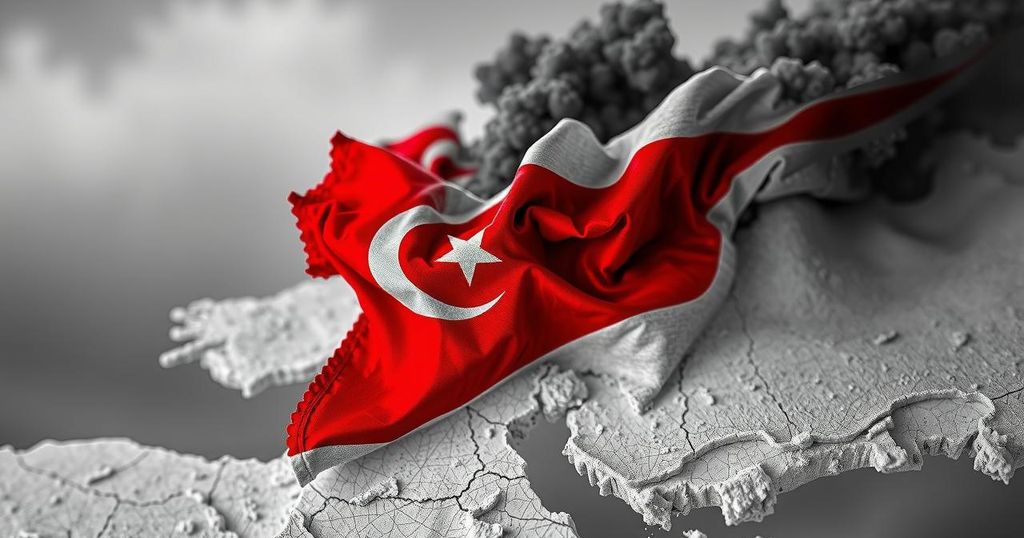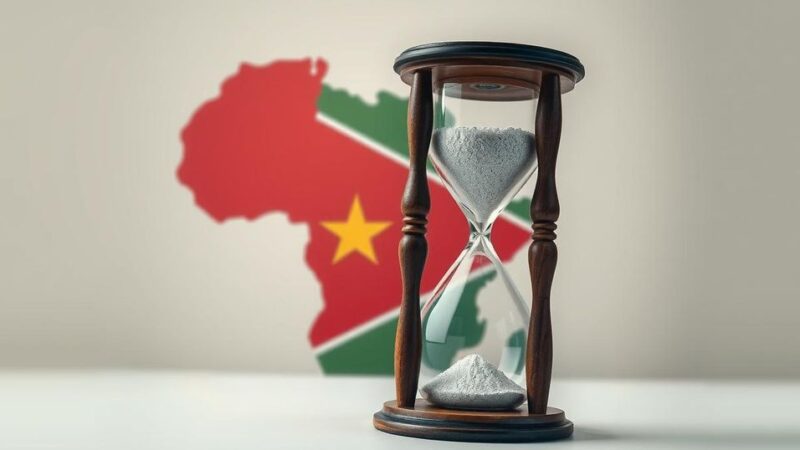The article analyzes the implications of Bashar Assad’s regime collapse in Syria, highlighting the repercussions for Iran’s “Axis of Resistance.” The loss of Syria as a strategic ally significantly hinders Iran’s influence over Hezbollah and regional powers. Amidst escalating tensions following the Israeli-Hamas conflict, Iran faces challenges to its deterrent capabilities and must navigate complex geopolitical dynamics while still retaining aspects of its nuclear program.
The situation for Iran’s regime has significantly deteriorated as its long-standing strategy of establishing an “Axis of Resistance” in the Middle East falters. The recent Israeli offensive, instigated by the October 7, 2023, Hamas attack, has exacerbated hostilities in Gaza and now Lebanon, where Iran’s ally, Hezbollah, faces severe losses. With the fall of Syrian President Bashar Assad, Iran is witnessing the collapse of a vital component of this resistance. The capture of Damascus by rebel forces underscores Assad’s reliance on Iranian and Russian support, which failed to materialize at a critical juncture.
This geopolitical transformation highlights the importance of Syria as a conduit for Iran’s supply lines to Hezbollah, which poses a direct threat to Israel. United Arab Emirates diplomat Anwar Gargash remarked that Iran’s deterrent capabilities have been severely compromised due to these recent developments. Despite retaining influence through its nuclear program, which remains a focal point for regional power dynamics, Iran’s supremacy in the Middle East has been greatly challenged.
In years past, Iran’s influence was at its peak, exemplified by Hezbollah’s resistance against Israel and Assad’s triumph over civil unrest. However, the swift disintegration of Assad’s regime reflects a shift in the balance of power. As Israel positions troops near the Golan Heights, the repercussions of Assad’s downfall reverberate throughout the region.
Although Iran’s prospects appear grim, it still possesses the potential to exert influence through its nuclear program and other allied factions, such as the Houthis in Yemen. The head of the International Atomic Energy Agency warns of Iran’s looming ability to substantially increase its stockpile of near-weapons-grade uranium. Should tensions escalate, the risks to regional stability, particularly involving oil infrastructure, could prove dire.
In summation, the collapse of Syria’s Assad regime marks a profound setback for Iran’s aspirations in the region. With multiple fronts of conflict and diminishing allies, the Iranian leadership faces a critical juncture as it strategizes its response to this geopolitical upheaval.
The article delves into the geopolitical implications of the recent collapse of Bashar Assad’s regime in Syria, exploring its consequences for Iran’s strategic influence in the Middle East. Historically, Iran has sought to create an “Axis of Resistance” comprising allied militant groups and states positioned against its adversaries, principally Israel. The backdrop of recent conflicts, particularly the escalated tensions following the Hamas attack on Israel and the resulting campaigns in Gaza and Lebanon, sets the stage for understanding this shift. The interconnectedness between Iran, Syria, and Hezbollah has historically served as a tactical advantage for Iran in the region, particularly concerning supply routes and military support. The article analyzes how the changing dynamics affect Iran’s capabilities and credibility both regionally and domestically.
In conclusion, the rapid unraveling of support for Iran, particularly evidenced by the fall of Assad’s regime in Syria, has marked a significant shift in the balance of power in the Middle East. Although Iran retains critical elements such as its nuclear program, the loss of Syria as a conduit could diminish its influence and operational capacity in supporting proxy groups like Hezbollah. The landscape of regional politics is rapidly changing, prompting Iran to reassess its strategies amidst mounting threats to its established order, both internally and externally.
Original Source: apnews.com






